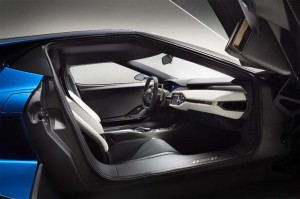Automotive interiors have come a long way in recent years. Even the most Spartan vehicles are likely to use materials and offer features that were found in only the most up-market models a decade ago. And that’s become a critical factor when motorists go to buy a new car, truck or crossover, says Moray Callum, the head of design at Ford Motor Co.
So, how to differentiate your product from the competition has become an increasingly critical challenge for a company like Ford. And the maker is turning to some interesting science to help it get a leg up. That includes the use of brain wave scanners that can tell when an interior design turns on a potential buyer or leaves them cold.
“Customers no longer just look at a vehicle as a conveyance,” contends Raj Nair, Ford’s director of product development, “but as an extension of their home or office.” So, they want the same level of design – and technology, he says.
But trying to pack that all into a relatively tight space can be a serious challenge – one reason manufacturers have been rushing to replace knobs and switches with touchscreen controls. That doesn’t always work, however. Recent studies, such as the J.D. Power Initial Quality Survey, have found that touchscreen systems are a major source of owner frustration – often because the technology doesn’t work. But poor design is another critical factor.
So, to get a better sense of how to lay out the passenger compartment, Ford has begun using several advanced biometric tracking systems, including one that can follow a person’s eyes as they slip behind the wheel to see what catches their attention. A brain wave scanner, in turn, can tell whether they like what they see or are turned off by the design.
(Ford opens up new Silicon Valley R&D center. Click Here for the story.)
Such research techniques can “help us make more informed decisions while (a new vehicle is) still in development,” according to design chief Callum.
The new techniques got a first workout during the rapid development of the Ford GT “ultracar.” The vehicle has a relatively tiny, two-seat cockpit that required extremely attention to detail – especially the placement of controls and gauges that a driver might have to access at extremely high speeds.
The new approach, Callum says, is a lot more objective than the traditional customer clinic approach where subjects were asked to sit inside a “buck,” or a mock-up of a future product, and give it a score. Brain wave technologies come as close as possible to reading a subject’s mind by watching what areas of the brain “light up” when they look at a new steering wheel, infotainment screen or even something as mundane as a cupholder.
A well-designed interior can make all the difference in the world when it comes to turning on a shopper. A poor design is one of three top reasons why a customer will avoid a vehicle, notes product development chief Nair.
(Google looking for partners; has no plans to build cars of its own. Click Here for the latest.)
Ford is still learning how to use the new technology. Part of the challenge is that an interior design that might look good when someone is shopping for a vehicle may prove to be less appealing after they actually buy the car and live with it for awhile. After all, research shows the average American spends nearly a half hour in their vehicle during the daily commute, or about 10 full days annually.
So, Ford researchers hope to figure out not only what is an exciting design up front but one that will continue to satisfy an owner long-term, says Callum.
“We really think this will help us make much more informed decisions,” he explains, “and push the boundaries of interior design.”
(VW aims to take the lead in automotive R&D. Click Here to see how – and what that will mean for motorists.)

